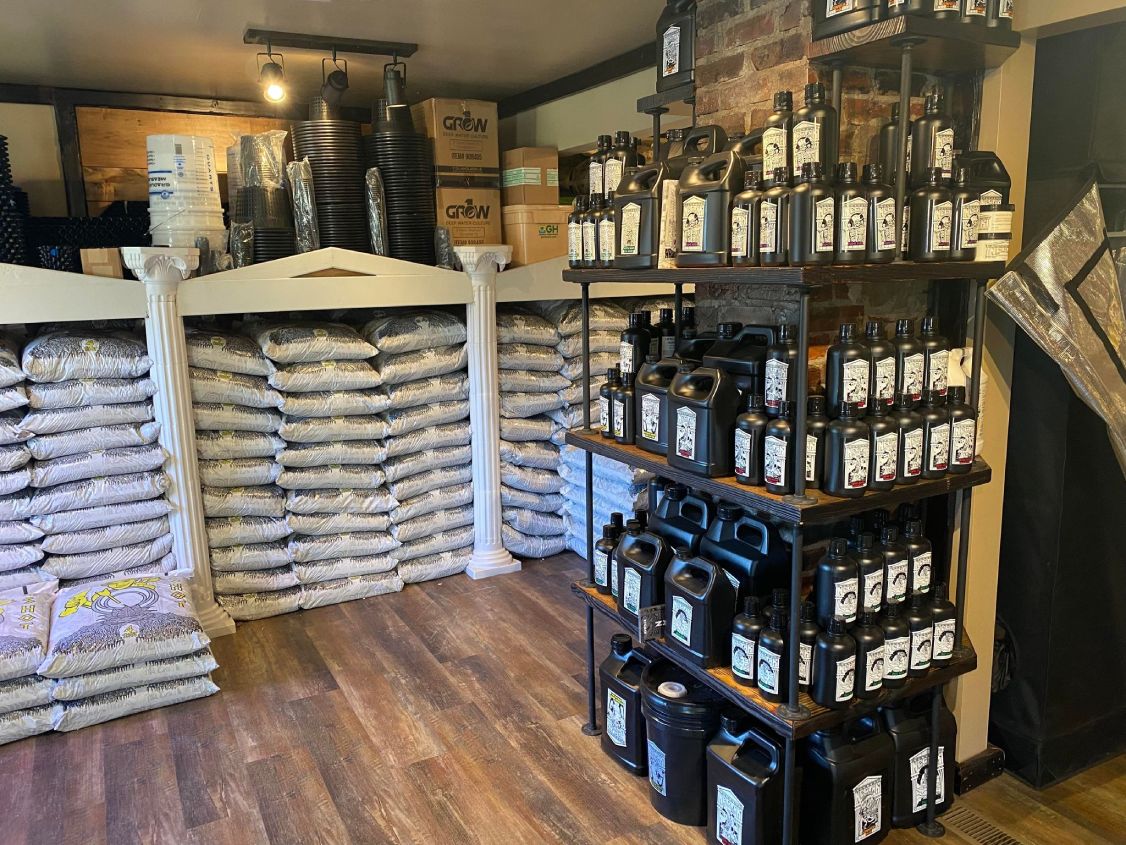The Indoor Earthworm Means: A Game-Changer in Planting Techniques
Wiki Article
Taking Advantage Of the Power of Hydroponics: a Deep Dive Into Uses and Different Kinds
In the world of contemporary farming, hydroponics has actually arised as a technique that tests standard farming practices by supplying a water-efficient and space-saving choice. The application of hydroponic systems opens up a world of possibilities for growing plants in varied atmospheres, ultimately impacting food production and sustainability. As we browse with the detailed landscape of hydroponics, discovering its various kinds and applications, a deeper understanding of its prospective to revolutionize farming practices and address global food protection issues begins to unravel.Advantages of Hydroponic Farming
Hydroponic farming provides many advantages over traditional soil-based agriculture. One of the key advantages is water effectiveness; hydroponic systems use up to 90% much less water compared to conventional farming methods.Additionally, hydroponic farming enables better control over nutrient levels, causing faster plant development and greater yields. By supplying vital nutrients straight to the plant roots, hydroponic systems promote much healthier and much more robust plant growth. Furthermore, the regulated atmosphere of hydroponic systems decreases the danger of insects and conditions, decreasing the demand for damaging chemicals and herbicides.

Typical Kinds of Hydroponic Equipments
One prevalent kind is the Deep Water Society (DWC) system, where plant roots are submerged in a nutrient service. The Ebb and Circulation system, likewise known as Flooding and Drain, occasionally floods the plant roots with nutrient option prior to draining it. Wick systems, the easiest form of hydroponics, make use of a wick to passively provide vitamins and mineral remedy to the plant origins.
Nutrient Movie Method (NFT) System

Among the crucial advantages of the NFT system is its water effectiveness. The Indoor Earthworm. Considering that the nutrient service is recirculated in a closed system, this method makes use of dramatically much less water contrasted to conventional dirt farming. Furthermore, the NFT system is space-efficient, making it perfect for interior farming or in locations with limited space for standard farming
Nevertheless, the NFT system calls for cautious monitoring and upkeep to make sure the constant flow of water view it now and nutrients. Any disturbance in the flow can rapidly impact plant health. Overall, the NFT system uses a lasting and efficient method to expand plants hydroponically, especially for plants that prosper in well-oxygenated root atmospheres.
Deep Water Culture (DWC) System
Relocating from the Nutrient Film Technique (NFT) system, the Deep Water Society (DWC) system is a hydroponic method that entails suspending plant roots directly in a nutrient service. Unlike NFT, where origins are continually subjected to a thin film of nutrient service, DWC plants have their roots submerged in a storage tank loaded with oxygenated nutrition water. The roots dangle in the nutrient option, permitting straight uptake of water and necessary nutrients.One of the vital advantages of the DWC system is its simpleness and reduced maintenance needs. The consistent access to oxygen and nutrients promotes rapid development and greater yields. DWC systems great post to read need adequate oygenation to protect against origin rot and ensure ideal nutrient absorption. Regular monitoring of pH degrees and nutrient concentrations is vital to stop discrepancies that can harm plant health.
Aeroponic System
An innovative approach in hydroponics farming, the Aeroponic System uses a fogging or misting system to provide nutrients straight to plant roots put on hold in the air. This system is understood for its capacity to promote quick growth and effective nutrient uptake as a result of the direct shipment of nutrients to the origins, permitting the plant to focus its power on growth instead of browsing for nutrients. In an aeroponic arrangement, plants are typically housed in a shut setting where the origins are periodically misted with a nutrient solution. This misting cycle makes sure that the roots receive enough oxygen, advertising healthy and balanced root development and total plant development.Among the key advantages of aeroponics is its water performance, as the system makes use of significantly less water compared to conventional soil-based farming approaches. In addition, the exact distribution of nutrients straight to the roots can result in higher yields and faster development prices. While aeroponics can be extra complex to establish and maintain contrasted to other hydroponic systems, its potential for enhanced plant growth and efficiency makes it a preferred choice for business farmers and hydroponic lovers looking for ideal outcomes.
Verdict
Finally, hydroponic farming provides countless benefits and various types of systems to pick from. The Nutrient Film Technique (NFT) system, Deep Water Society (DWC) system, and Aeroponic system are among the most typical approaches used in hydroponics. Each system has its own benefits and restrictions, making it important for farmers to thoroughly consider their needs and choices before picking one of the most ideal system for their crops.Unlike other hydroponic systems where plants are submerged in a nutrient solution, in the NFT system, the origins are revealed to the water just in a shallow film.Relocating from the Nutrient Movie Strategy (NFT) system, the Deep Water Society (DWC) system is a hydroponic method that involves suspending plant origins straight in a nutrient solution.An ingenious technique in hydroponics cultivation, the Aeroponic System makes use of a misting or misting find out here now system to supply nutrients directly to plant roots put on hold in the air. The Nutrient Movie Strategy (NFT) system, Deep Water Culture (DWC) system, and Aeroponic system are amongst the most usual techniques used in hydroponics. Each system has its very own benefits and constraints, making it crucial for farmers to meticulously consider their demands and choices before picking the most suitable system for their plants.
Report this wiki page